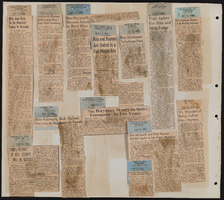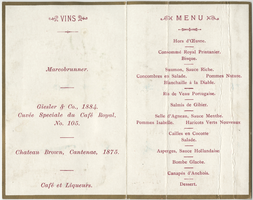Search the Special Collections and Archives Portal
Search Results
Lee and Thomas Beam Music Center Architectural Records
Identifier
Abstract
The Lee and Thomas Beam Music Center Architectural Records (1998-1999) contain architectural drawing sets for the Lee and Thomas Beam Music Center's design and construction. Located on the University of Nevada, Las Vegas campus, the Lee and Thomas Beam Music Center provides professional and liberal arts education to students seeking a career in the study and creation of music. The school enrolls more than 400 music majors and attracts students throughout America and internationally.
Archival Collection
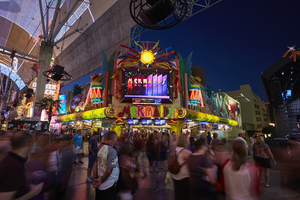
Photographs of Mermaids Casino signs, Las Vegas (Nev.), June 24, 2016
Date
Archival Collection
Description
Site address: 32 Fremont St
Sign owner: Derek and Greg Stevens
Sign details: Shutdown in 2016, opened briefly June 28th, 2017 for 8 hours to abide by gambling license law, was torn down shortly after. 2.76 acre lot, originally built in 1949.
Sign condition: Signage was removed from building during deconstruction
Sign form: Decorated shed
Sign-specific description: Covering all the sides of the Mermaids facing Fremont street, gives the feel of New Orleans during Mardi Gras with its bright vibrant colors, drums, maracas, and other items. Skeleton neon was used to accentuate features of the sign like details in the drums, outlining the word "Mermaids", and a good portion of the sign was internally lit as well. Giant TV screen hung in the middle at the corner of the building, giant Sun shaped pinata thing above the TV screen adding more to the theme.
Sign - type of display: Neon, LED screen
Sign - media: Steel and fiberglass
Sign - non-neon treatments: LED screen
Sign animation: Animated with an LED TV screen and some neon would flash on and off
Sign environment: Downtown on Fremont Street, part of the Experience. Surrounded by other casinos and gift stores.
Sign - date of installation: c. 1999
Sign - date of redesign/move: Torn down Summer 2017
Sign - thematic influences: Southern party themed, Mardi Gras.
Sign - artistic significance: American South and Mardi Gras.
Survey - research locations: Vital Vegas, Assessor's website
Surveyor: Danny Jacobs
Survey - date completed: 2017-09-09
Sign keywords: Neon; Steel; Fiberglass; Flashing; Video screen; Sculptural
Mixed Content
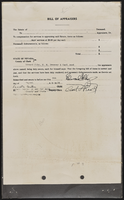
Stewart family real estate documents
Date
Archival Collection
Description
Stewart family real estate documents
Text
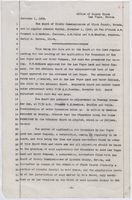
Minutes of Clark County commission meeting, November 1, 1909
Date
Archival Collection
Description
Minutes of meeting discussing the granting of a franchise to the Las Vegas Land and Water Company.
Text
Audio clip of an inteview with Chris Ramirez by Wendy Starkweather on October 2, 2013.
Date
Archival Collection
Description
Sound
The Whitney Family Collection of Bunkerville, Nevada Photographs
Identifier
Abstract
The Whitney Family Collection of Bunkerville, Nevada Photographs (approximately 1900-1930) consists of black-and-white photographic prints and negatives depicting Agnes Murphy Neve, Luke Whitney, Julia Whitney, and Alfred Syphus near the Whitney family ranch in Bunkerville, Nevada. One image portrays an overflow drainage pipe connected to the St. Thomas pond near Bunkerville, Nevada.
Archival Collection
William White Postcard Collection
Identifier
Abstract
The William White Postcard Collection (approximately 1930-1940) consists of three postcards depicting the Hoover Dam (Boulder Dam) on the border of Nevada and Arizona. One postcard showcases Oskar J. W. Hansen’s “Figures of the Republic” sculptures near the Hoover Dam. Another postcard displays an interior view of the visitor’s gallery at the Hoover Dam. The final postcard depicts the Hoover Dam at sunset.
Archival Collection
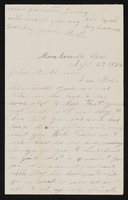
Letter from Francis M. Bunker and John M. Bunker's Mother, Bunkerville, Nevada to John M. Bunker
Date
Archival Collection
Description
From the Syphus-Bunker Papers (MS-00169). The folder contains an original handwritten letter, a typed transcription of the same letter, and a copy of original letter attached.
Text

